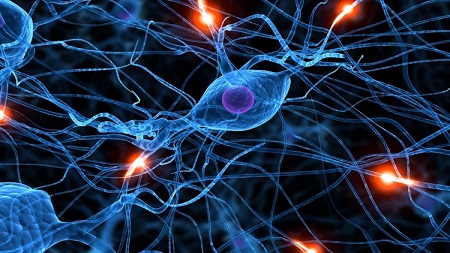
English | MP4 | AVC 1280×720 | AAC 48KHz 2ch | 6 Hours | 873 MB
Data science techniques for professionals and students – learn the theory behind logistic regression and code in Python
This course is a lead-in to deep learning and neural networks – it covers a popular and fundamental technique used in machine learning, data science and statistics: logistic regression. We cover the theory from the ground up: derivation of the solution, and applications to real-world problems. We show you how one might code their own logistic regression module in Python.
This course does not require any external materials. Everything needed (Python, and some Python libraries) can be obtained for free.
This course provides you with many practical examples so that you can really see how deep learning can be used on anything. Throughout the course, we’ll do a course project, which will show you how to predict user actions on a website given user data like whether or not that user is on a mobile device, the number of products they viewed, how long they stayed on your site, whether or not they are a returning visitor, and what time of day they visited.
Another project at the end of the course shows you how you can use deep learning for facial expression recognition. Imagine being able to predict someone’s emotions just based on a picture!
If you are a programmer and you want to enhance your coding abilities by learning about data science, then this course is for you. If you have a technical or mathematical background, and you want use your skills to make data-driven decisions and optimize your business using scientific principles, then this course is for you.
This course focuses on “how to build and understand”, not just “how to use”. Anyone can learn to use an API in 15 minutes after reading some documentation. It’s not about “remembering facts”, it’s about “seeing for yourself” via experimentation. It will teach you how to visualize what’s happening in the model internally. If you want more than just a superficial look at machine learning models, this course is for you.
All the code for this course can be downloaded from my github: /lazyprogrammer/machine_learning_examples
In the directory: logistic_regression_class
Make sure you always “git pull” so you have the latest version!
What you’ll learn
- program logistic regression from scratch in Python
- describe how logistic regression is useful in data science
- derive the error and update rule for logistic regression
- understand how logistic regression works as an analogy for the biological neuron
- use logistic regression to solve real-world business problems like predicting user actions from e-commerce data and facial expression recognition
- understand why regularization is used in machine learning
Table of Contents
Start Here
1 Introduction and Outline
2 How to Succeed in this Course
3 Review of the classification problem
4 Introduction to the E-Commerce Course Project
Basics What is linear classification What’s the relation to neural networks
5 Linear Classification
6 Biological inspiration – the neuron
7 How do we calculate the output of a neuron logistic classifier – Theory
8 How do we calculate the output of a neuron logistic classifier – Code
9 Interpretation of Logistic Regression Output
10 E-Commerce Course Project Pre-Processing the Data
11 E-Commerce Course Project Making Predictions
12 Feedforward Quiz
13 Prediction Section Summary
Solving for the optimal weights
14 Training Section Introduction
15 E-Commerce Course Project Training the Logistic Model
16 Training Section Summary
17 A closed-form solution to the Bayes classifier
18 What do all these symbols mean X, Y, N, D, L, J, P(Y=1X), etc.
19 The cross-entropy error function – Theory
20 The cross-entropy error function – Code
21 Visualizing the linear discriminant Bayes classifier Gaussian clouds
22 Maximizing the likelihood
23 Updating the weights using gradient descent – Theory
24 Updating the weights using gradient descent – Code
Practical concerns
25 Practical Section Introduction
26 Practical Section Summary
27 Interpreting the Weights
28 L2 Regularization – Theory
29 L2 Regularization – Code
30 L1 Regularization – Theory
31 L1 Regularization – Code
32 L1 vs L2 Regularization
33 The donut problem
34 The XOR problem
Checkpoint and applications How to make sure you know your stuff
35 BONUS Sentiment Analysis
36 BONUS Where to get Udemy coupons and FREE deep learning material
37 BONUS Exercises + how to get good at this
Project Facial Expression Recognition
38 Facial Expression Recognition Project Introduction
39 Facial Expression Recognition Problem Description
40 The class imbalance problem
41 Utilities walkthrough
42 Facial Expression Recognition in Code
43 Facial Expression Recognition Project Summary
Appendix
44 What is the Appendix
45 Proof that using Jupyter Notebook is the same as not using it
46 Python 2 vs Python 3
47 What order should I take your courses in (part 1)
48 What order should I take your courses in (part 2)
49 Gradient Descent Tutorial
50 Windows-Focused Environment Setup 2018
51 How to install Numpy, Scipy, Matplotlib, Pandas, IPython, Theano, and TensorFlow
52 How to Code by Yourself (part 1)
53 How to Code by Yourself (part 2)
54 How to Uncompress a .tar.gz file
55 How to Succeed in this Course (Long Version)
56 Is this for Beginners or Experts Academic or Practical Fast or slow-paced
Resolve the captcha to access the links!